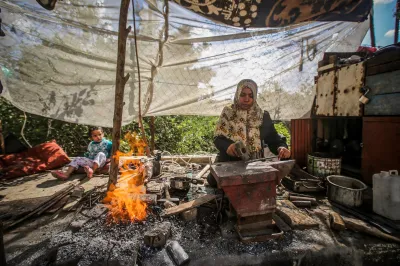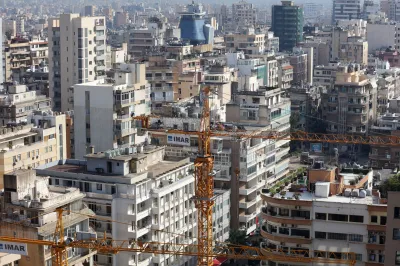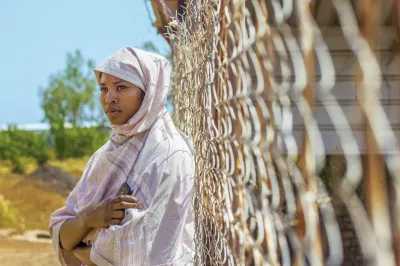To the Future and Back: Financial Inclusion in the Arab World
Imagine it is 2030 and nearly everyone in the Arab world has access to financial services. Over the past two decades, legal reforms have expanded the financial market for existing and new financial service providers, spurring greater specialization and competition. People can make small payments (whether P2P, P2B, B2B, P2G, or G2P) in seconds — rendering the half-a-day trip to pay a utility bill a story from the past. Deposit amounts within the formal financial system, whether at full-fledged banks, payments banks or microfinance banks, have increased two- to five-fold. Fueled by this additional liquidity, formal lending to the private sector and to individuals has had a multiplier effect, contributing to GDP growth to an extent that has actually reduced inequalities. More private-public partnerships are soon expected to provide near-universal insurance coverage to all.
Now back to reality. In 2017, the picture is starkly different. Analysis of the available Findex data, as shown in a joint Arab Monetary Fund-CGAP report on financial inclusion measurement in the Arab world, points to a large unmet demand for financial services. Our analysis shows that 70 percent of adults in the region (168 million people) lack access to a basic account, and this figure reaches close to 80 percent in the region’s developing countries. Significantly, our analysis also shows that many of the unbanked are active economic citizens, as evidenced by the fact that 92 million people report borrowing informally. Taken together, these figures suggest that financial service providers have an opportunity to address a huge unmet demand across the Arab world, including in countries with relatively more active financial markets.
At first glance, it might be hard to believe that a full 70 percent of people in the region lack access to a bank account. But the trends are identical when analyzing the supply-side figures from the International Monetary Fund’s Financial Access Survey. No matter how you look at it, whether by surveying people in the streets or by aggregating data from financial service providers, the conclusion is the same: The Arab world lags behind other regions in access to formal financial services.


The good news is that we are getting closer to the future I described above. The Arab world has seen tangible progress in financial inclusion over the past few years, including changes to legal and regulatory frameworks, which have historically been (and still often are) the region’s main obstacles to financial inclusion. Many of the changes from 2011 to 2015 focused on microcredit, but several countries made it possible for non-bank financial institutions to offer credit services and to market insurance products on behalf of insurance companies for the first time (e.g., Tunisia law-decree n°117, Palestine regulation n°132, Egypt microfinance law n°141, and Jordan microfinance companies regulation n°5). More recently, revamped banking laws have authorized payments companies licensed and supervised by a central bank to issue transactional accounts (e.g., Morocco’s 2015 banking law n°12.103 and Tunisia’s 2016 banking law n°48). Upcoming executive regulations in Morocco and Tunisia are expected to make a big difference in processing small payments for the unbanked and banked alike. Jordan now allows both refugees and nationals to open e-wallets, after taking the bold bet of mandating interoperability among mobile payment service providers from the first day of operations (unlike in many other countries, where interoperability may take years). Qatar, which like many GCC countries hosts large numbers of migrant workers, made remittances through mobile easy and cheap, improving the lives of thousands throughout the region and beyond.
As a number of countries put financial inclusion strategies into place, the region is also benefiting from increased knowledge sharing. The Arab Monetary Fund’s Financial Inclusion Task Force is one example where knowledge exchange among regional central banks happens. In collaboration with several partners, the task force is making more and more tools available on topics ranging from demand-side surveys and financial consumer protection to de-risking.
Of course, much more remains to be done on all fronts to meet the Arab world’s large unmet demand for financial services. Access to small savings, arguably the most important financial service for low-income people, requires more enabling legal frameworks (e.g., tiered licensing of service providers and tiered customer due diligence) so that specialized providers can emerge and become sustainable. The exceptions are perhaps countries like Morocco or Tunisia, where active postal networks play a key role in offering basic services, or Yemen, where a sound microfinance banking law is already in place. Gender-disaggregated data on financial inclusion in the region is not yet available, although it would allow for more targeted policies to nudge social norms on broader women’s legal and economic rights. Lastly, even where regulation and infrastructure are in place, financial inclusion stakeholders have yet to witness success stories and market gaps being truly addressed.
Hopes are nonetheless high, and arguably the biggest change to take place over the past five years is encouraging: the shift in discourse among policymakers, who now acknowledge financial exclusion realities. The emerging consensus is that there is an untapped market and a huge opportunity to bring adapted financial services to those who need them, for the benefit of all. To advance financial inclusion, we need fact-based policies, implemented and championed by a critical mass of policy-makers who are eager to improve their countries’ financial systems. Now that a number of institutions are joining forces to make this happen, today’s opportunities may very well become tomorrow’s realities.




Add new comment